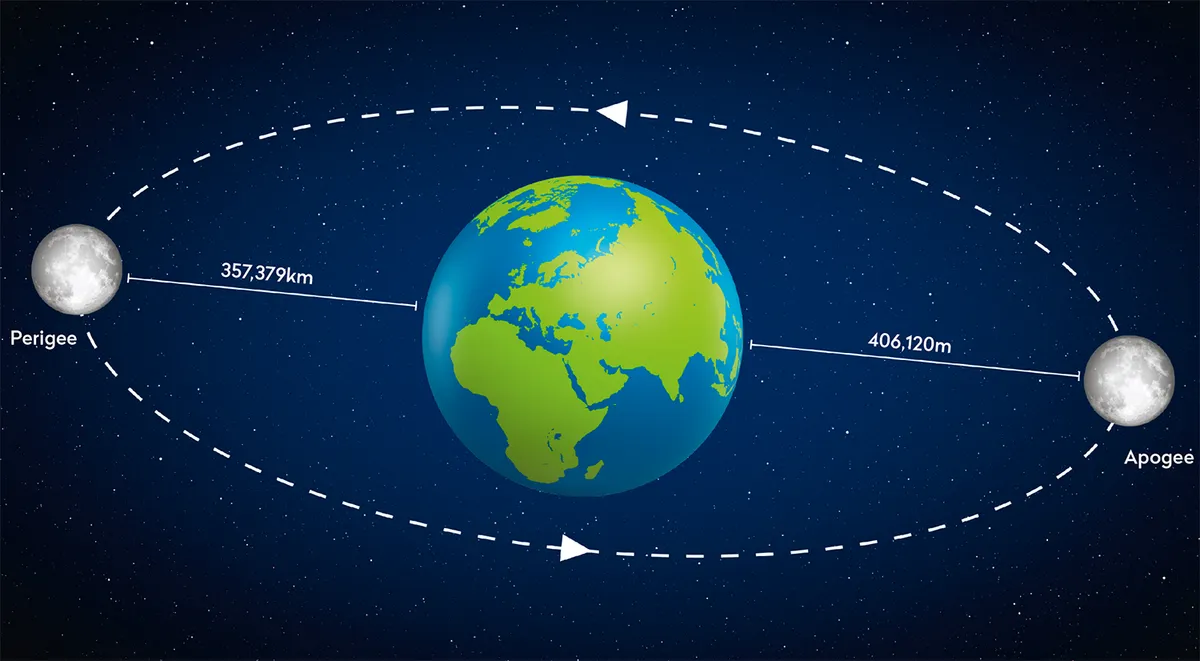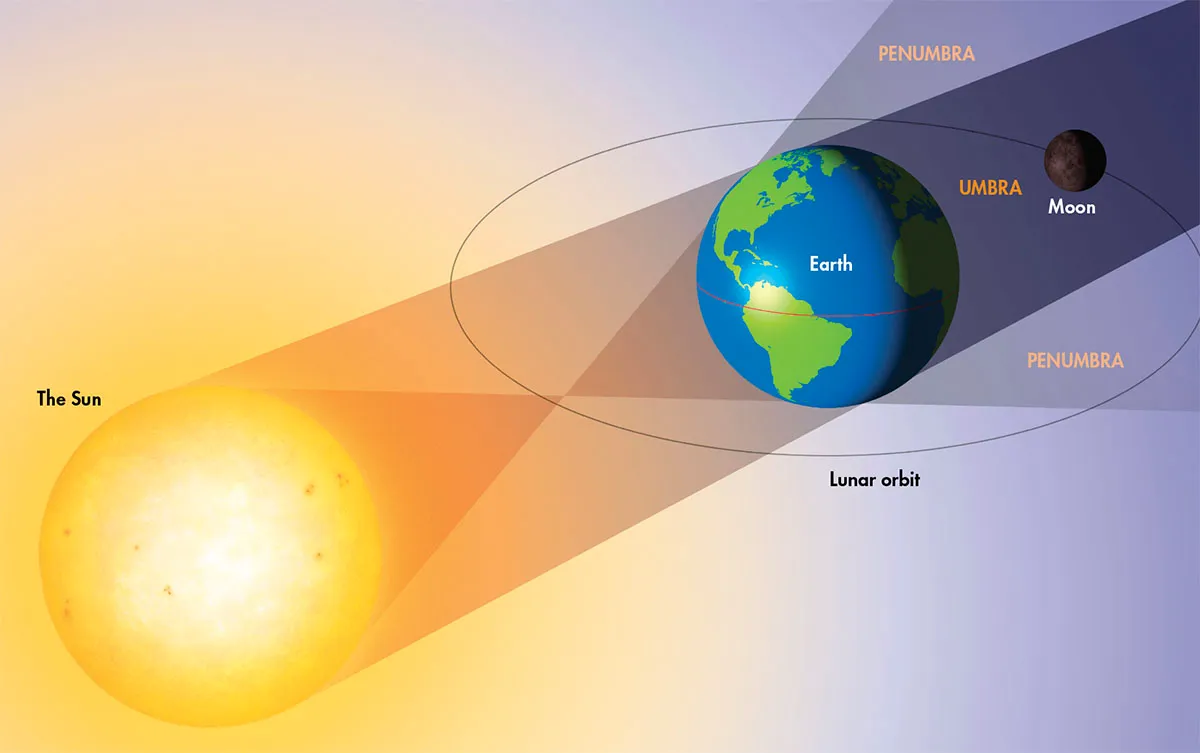The next full Moon in 2025 is the Cold Moon, the last full Moon of the year, rising on 4th December at 14:48 UTC.
This December full Moon will also be a so-called 'supermoon', meaning it will technically appear bigger than usual. It's the third and final supermoon of 2025.
Download our lunar phases poster 2025 (PDF) for a printable guide to help you keep track of the Moon in 2025.
Sign up to the BBC Sky at Night magazine e-newsletter for weekly observing advice including Moonrise times and phases.
The December full Moon is the third in a row of three supermoons in 2025:
- Harvest Moon – 7 October
- Beaver Moon – 5 November
- Cold Moon – 4 December
There's one more supermoon to follow the following month, on 3 January 2026.
In this full Moon 2025 and 2026 calendar, you'll find dates and names for every full Moon this year and next, including Moonrise times.
For more advice, read our guides on how to observe the Moon and how to photograph the Moon.

Full Moon 2025 dates
- 13th January – 15:17 UTC
- 12th February – 17:07 UTC
- 14th March – 18:40 UTC
- 13th April – 21:08 UTC
- 12th May – 21:28 BST
- 11th June – 22:46 BST
- 10th July – 22:09 BST
- 9th August – 21:13 BST
- 7th September – 19:42 BST
- 7th October – 18:20 BST
- 5th November – 15:55 UTC
- 4th December – 14:48 UTC
Full Moon 2025 names
These are the popular names for full Moons in 2025.
- Wolf Moon – 13 January
- Snow Moon – 12 February
- Worm Moon – 14 March
- Pink Moon – 13 April
- Flower Moon – 12 May
- Strawberry Moon – 11 June
- Buck Moon – 10 July
- Sturgeon Moon – 9 August
- Corn Moon – 7 September
- Hunter's Moon – 7 October (Harvest Moon and supermoon)
- Beaver Moon – 5 November (supermoon)
- Cold Moon – 4 December (supermoon)
Full Moon 2026 dates
- 3rd January
- 1st February
- 3rd March
- 1st April
- 1st May
- 31st May
- 29th June
- 29th July
- 27th August
- 26th September
- 26th October
- 24th November
- 23rd December
Full Moon 2026 names
- Wolf Moon – 3rd January (supermoon)
- Snow Moon – 1st February
- Worm Moon – 3rd March
- Pink Moon – 1st April
- Flower Moon – 1st May
- Strawberry Moon – 29th June
- Buck Moon – 29th July
- Sturgeon Moon – 27th August
- 26th September – Corn Moon (Harvest Moon)
- 26th October – Hunter's Moon
- 24th November – Beaver Moon (supermoon)
- 23rd December – Cold Moon (supermoon)
Things to note around the 2026 full Moons:
There are three supermoons, one each in January, November and December.
The 2026 Harvest Moon is the September full Moon, as it's the closest full Moon to the September equinox.
And there will be a second full Moon in May, known as a 'monthly blue Moon', which means there are a total of 13 full Moons in 2026.
Observing
Many astronomers and stargazers find the full Moon a nuisance, as the bright lunar glare drowns out their view of deep-sky objects.
And even if the Moon is your chosen observing target, many argue that features on the Moon like craters and lunar maria are better seen during the lunar phases.
During a crescent Moon or gibbous Moon, for example, the terminator – the line dividing the lit and unlit portions of the Moon – accentuates certain features, making them much better primed for exploration.
There are even famous clair-obscur effects on the Moon that you can look for at certain times.

Why full Moons happen
A full Moon is a big bright, beautiful Moon in the night sky, when the whole of the Earth-facing side of the Moon is illuminated.
This happens as a result of Earth orbiting the Sun and the Moon in turn orbiting Earth.
During a full Moon, the Moon is on the opposite side of the Earth from the Sun, allowing its entire Earth-facing side to be illuminated.
Think of it like this: we're standing on Earth, looking up at the Moon. The Sun is directly behind us, and shining directly on to the Moon, which is in front of us.
That's why a full Moon happens.
Full Moon is just one of the Moon's phases, which change throughout the cycle that takes about 29.5 days to complete.

Moon’s orbit and phases
The Moon orbits Earth in an elliptical path. As it orbits our planet, different portions of its surface are lit by the Sun, causing the Moon’s appearance from Earth to change.
These changes are called lunar phases. The main phases include new Moon, first quarter, full Moon and last quarter.
Inbetween these key phases we see the Moon either as a crescent, or as a gibbous, the latter being when more than half of the Earth-facing side of the Moon is illuminated.
A full Moon happens when the Sun, Earth, and Moon align in a straight line, with Earth in the middle.

Supermoons
The Moon's orbit around Earth isn't a perfect circle; it's elliptical, or egg-shaped.
This means that sometimes the Moon is closest to Earth in its orbit, and sometimes it's furthest from Earth in its orbit.
When it's closest, this is known as perigee. When it's furthest, this is known as apogee.
A perigee full Moon technically appears bigger than a 'regular full Moon', and is sometimes known as a 'supermoon'.

In true astronomical parlance, a 'supermoon' is a 'perigee syzygy Moon', 'syzygy' meaning three or more astronomical bodies in a straight line.
However, in reality the difference between a regular full Moon and a 'supermoon' is imperceptible from one month to the next.
But a good way of recording the difference is to take multiple photos and compare them to keep a record of the Moon's apparent change in size.
You can see the effect of this in the image below.

Observing the next full Moon 2025
Many naked-eye stargazers are keen to know when the next full Moon will appear, because there's just something awe-inspiring about a bright lunar disc dominating the night sky.
This is especially true during a supermoon, which many observers get excited about, and which are visible in October, November and December 2025.
In 2026, there are supermoons in January, November and December.
There is still a lot you can see on the lunar surface if you step outside to observe a full Moon.
If it's been raining (or you happen to be near a waterfall!) you might also be able to spot a moonbow.
Scroll down for 2025's key dates in our calendar, including the different names given to each one and when they will rise.

Full Moon names explained
Today everyone’s familiar with the popular, informal names given to full Moons – there’s a different one for each month.
The waxing and waning appearance of our lunar neighbour is a constant presence in our skies.
But the appearance of the bright full Moon disc can be a mixed blessing, depending on your point of view.

The bright lunar glow makes it harder to see the stars beyond, but it does have a beauty all of its own, easy to appreciate if you take the time to look.
Using informal or formal names helps us appreciate the lunar cycle, and were used in ancient times to keep track of the calendar throughout the year.
These Moon names have no bearing on what the Moon will actually look like, and don't mean the Moon on that date will look strange or unusual (you'll never see a green Moon, for example, despite the pervading myth).
Click here to find out why February only has 28 days.

Equipment: Sony RX10 IV camera, Sony 24–600mm lens, Manfrotto 055XPRO3 tripod
Blue Moon explained
Perhaps the most well-known name is the Blue Moon, considered popularly to be the second full Moon in a month.
This definition is based on a misinterpretation that originated in a 1946 edition of Sky & Telescope Magazine.
It became widespread in the 1980s after it was used in a popular radio show and board game Trivial Pursuit.
The original definition of a Blue Moon is the third full Moon in a season that contains four Moons.
Here, the seasons are defined as the time between winter solstice, spring equinox, summer solstice and vernal equinox.

Full Moon vs new Moon
Full Moon and new Moon are two key phases in the monthly lunar cycle.
During full Moon, the whole of the Earth-facing side of the Moon is illuminated.
During new Moon, the Earth-facing side of the Moon is in complete shadow.
New Moon marks the beginning of the lunar cycle. After new Moon, the Earth-facing side of the Moon becomes more illuminated each day – known as 'waxing' – until it reaches the half-way point: full Moon.
After full Moon, the Earth-facing side of the Moon becomes less illuminated each day – known as 'waning' – until it is again completely in shadow: new Moon.
Full Moon happens when Earth is between the Sun and the Moon. When we look at the Moon, the Sun is behind us, shining onto the lunar surface.
New Moon happens when the Moon is positioned between Earth and the Sun, meaning the far side of the Moon is illuminated, but the Earth-facing side of the Moon is basked in shadow.
Occasionally if the full Moon, Earth and the Sun are positioned directly in a line together, then we get a lunar eclipse.
If the Earth, the new Moon and the Sun are positioned directly in a line together, we get a solar eclipse.
If you observe or photograph the next full Moon, share your observations and images with us via contactus@skyatnightmagazine.com

